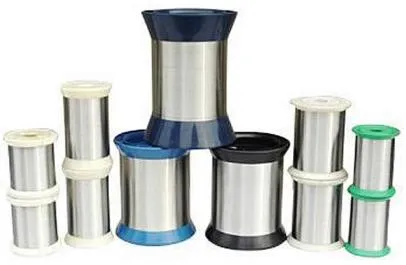 電話番号:
+86-13102802206
電話番号:
+86-13102802206
 Eメール:
fencenetting@china.com
Eメール:
fencenetting@china.com
 言語
言語
 電話番号:
+86-13102802206
電話番号:
+86-13102802206
 Eメール:
fencenetting@china.com
Eメール:
fencenetting@china.com
 言語
言語


In construction, landscaping, marine applications, and industrial design, the materials chosen define not just the structure, but the longevity and performance of the project. Among the most reliable and versatile materials on the market today is ステンレスワイヤー, renowned for its exceptional strength, corrosion resistance, and adaptability. This remarkable material has transformed how builders, engineers, and designers approach modern challenges, providing a sleek yet resilient option that performs exceptionally under demanding conditions. As demand grows for high-performance components that don’t compromise on appearance or safety, stainless wire products have quickly risen to prominence across multiple sectors.

In many industries, stainless steel cable serves as the backbone of safety systems, load-bearing structures, and architectural features. Known for its superior tensile strength and resistance to extreme weather conditions, stainless steel cable is the ideal choice for outdoor use, including suspension bridges, fencing, and rigging in maritime environments. While some materials degrade over time due to saltwater or UV exposure, the stainless steel cable holds its form and function for years. In addition to performance, its polished finish adds a clean, modern aesthetic that suits both commercial and residential applications.
Whether supporting garden trellises or securing heavy loads, stainless cable offers unmatched flexibility combined with structural strength. It's this adaptability that makes it so popular among DIY enthusiasts and professional contractors alike. Unlike conventional cables that rust or weaken with exposure, stainless cable is built to endure. Additionally, its smooth surface and sleek look make it ideal for projects where both form and function are important. From green walls in urban landscapes to safety railings in modern architecture, stainless cable continues to set new standards in both aesthetics and performance.
Precision and strength are essential in construction, and stainless steel tie wire meets these needs flawlessly. This versatile product is commonly used to secure rebar, fasten fencing, or bundle materials for transport. The key advantage of stainless steel tie wire lies in its rust-resistant properties, which ensure lasting performance even in damp or corrosive environments. Unlike galvanized alternatives, stainless steel tie wire doesn’t flake or lose coating over time. Its consistent diameter and malleability make it easy to work with, whether manually twisting ties or using automated tools for large-scale projects.
In both residential and industrial settings, stainless wire mesh serves as a critical component for filtration, separation, and protection. Available in various weave patterns and densities, stainless wire mesh is used in everything from insect screens to industrial sieves. What makes stainless wire mesh especially valuable is its ability to withstand heat, moisture, and mechanical wear. It’s often found in food processing facilities, chemical plants, and construction projects where hygiene and durability are paramount. Moreover, designers use stainless wire mesh for aesthetic elements in architecture, such as facades, privacy screens, and cabinetry inserts, proving its multifunctional appeal.
The combination of chromium, nickel, and molybdenum in stainless steel creates an alloy that resists rust, oxidation, and stress corrosion. This makes stainless steel cable significantly more durable than plain steel or coated materials in harsh environments.
Architects frequently use stainless cable in tension-based structures, balcony railings, and decorative elements. Its sleek profile and reflective surface make it a favorite for open-concept and minimalist design trends.
Use stainless steel tie wire when the project demands long-term exposure to moisture or corrosive agents. It’s especially useful in marine construction, underground installations, and projects requiring hygienic materials like those in food or medical environments.
Stainless wire mesh comes in plain weave, twill weave, and Dutch weave styles, each offering different strengths and filtration capabilities. Applications range from sieving particles to reinforcing concrete and shielding sensitive equipment.
Absolutely. Its elegant finish and high strength make stainless wire perfect for balustrades, staircases, custom lighting fixtures, and even furniture. Its corrosion resistance ensures it maintains its appearance over time, even outdoors.
Q: What are the benefits of using stainless steel cable in outdoor applications?
A: Stainless steel cable offers unmatched weather resistance, strength, and aesthetic appeal. It does not rust or degrade, making it ideal for long-term exposure to the elements.
Q: How flexible is stainless cable for use in garden or landscape design?
A: Stainless cable is highly flexible and can be used in a variety of landscape features, such as plant supports, tensioned green walls, and trellises, while maintaining its structural integrity.
Q: Is stainless steel tie wire difficult to work with for beginners?
A: Not at all. Stainless steel tie wire is pliable yet strong, making it easy to twist and secure by hand or with standard tying tools. It’s perfect for DIY projects and professional use alike.
Q: Can stainless wire mesh be used for ventilation or safety grilles?
A: Yes, its strength and airflow capabilities make it ideal for HVAC grilles, machine guards, and protective barriers in both residential and industrial environments.
Q: How does stainless wire compare in cost to other wire options?
A: While stainless wire may have a higher initial cost, its longevity and low maintenance requirements make it more cost-effective over time compared to materials that corrode or wear out quickly.